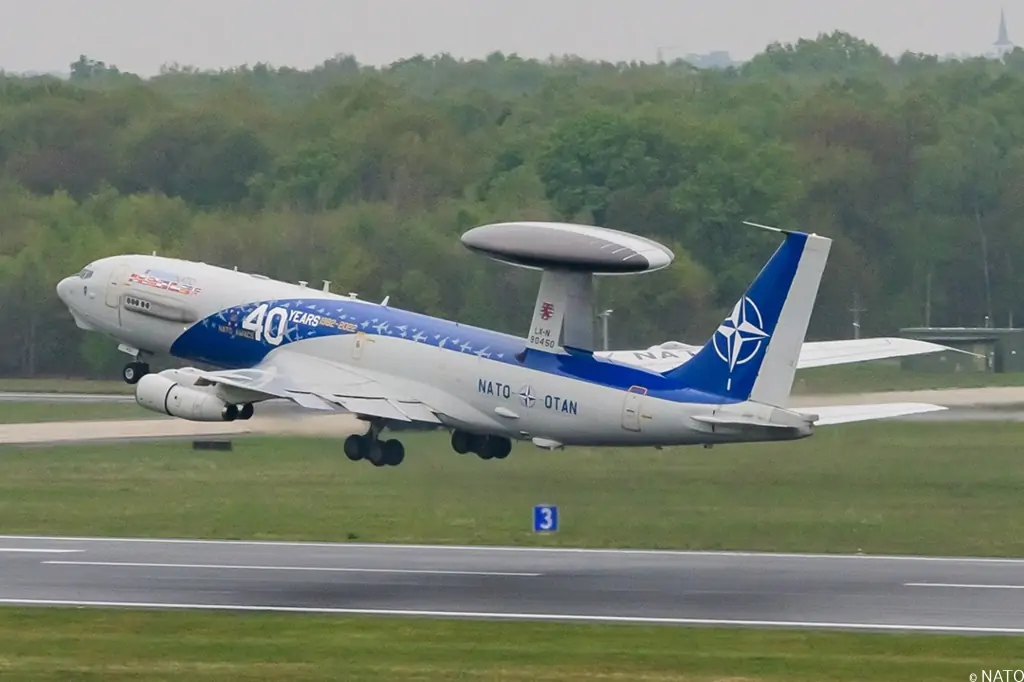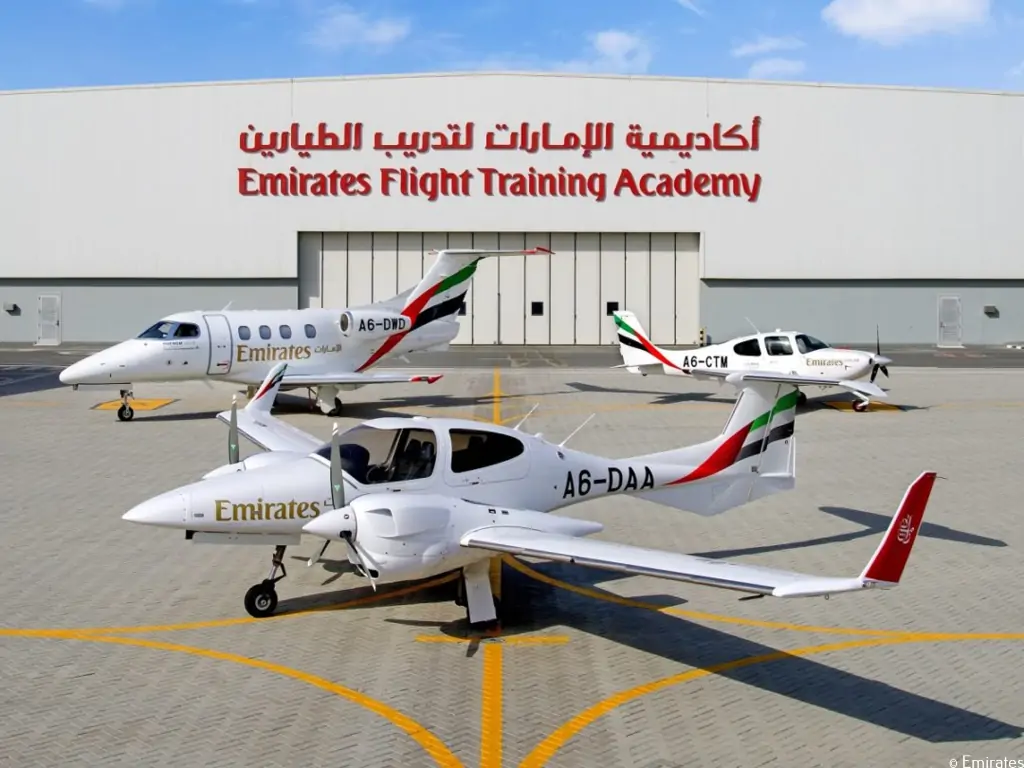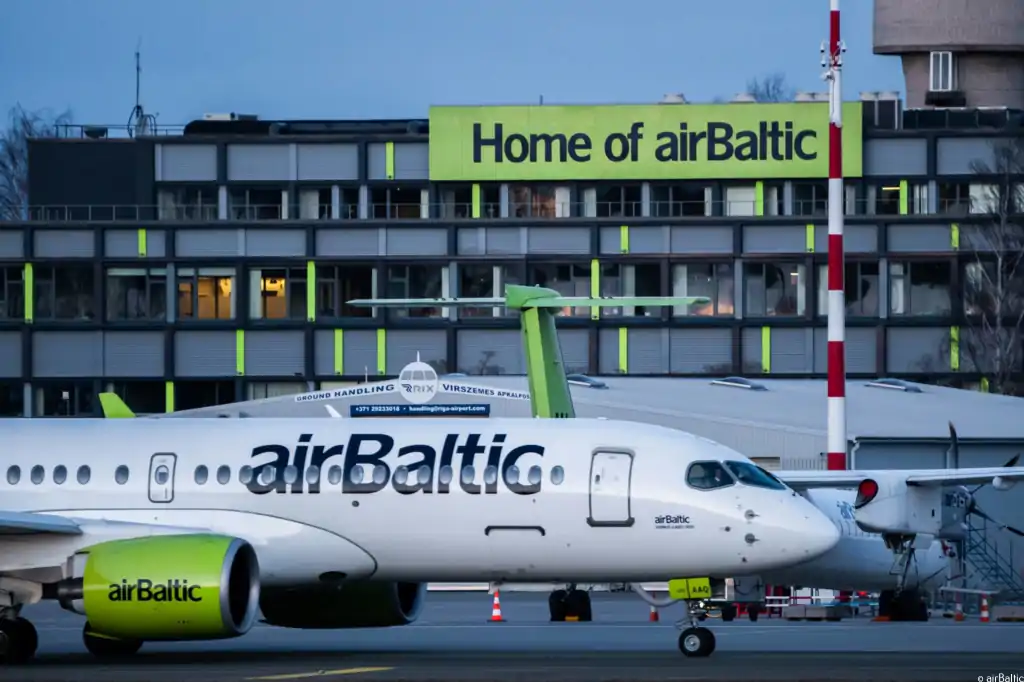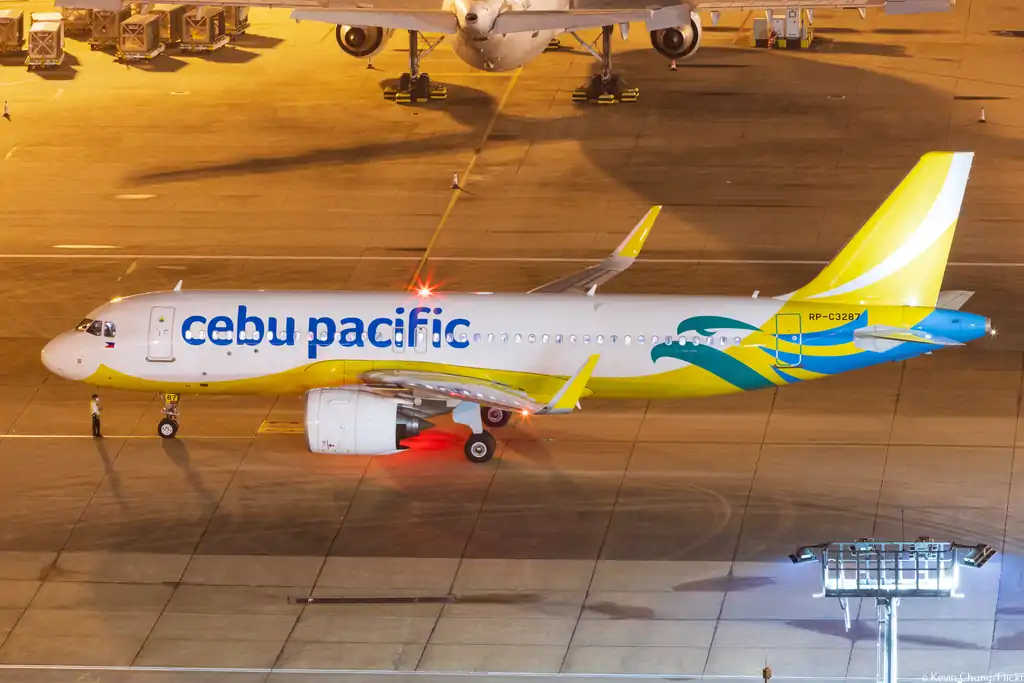NATO to Upgrade its Surveillance Fleet With 6 Boeing E-7 A Wedgetail Aircraft
Radhika Bansal
17 Nov 2023

NATO will replace its ageing fleet of AWACS surveillance planes, in service since the Cold War in the 1980s, with a militarised version of the Boeing 737 commercial jet, the alliance said on Wednesday, November 15 in a deal likely worth billions of euros.
Acting like a flying radar tower, the AWACS (Airborne Warning and Control System) jets with the distinctive, nine-metre wide radomes on their backs have been NATO's eyes in the sky since 1982. With their rotating radar, the current-modified Boeing 707 jets can detect aircraft at a distance of more than 400 kilometres (250 miles).
They are capable of monitoring an area of some 300,000 square kilometres (115,000 sq miles), a territory the size of Poland, according to NATO, and can also detect ground targets such as ships.
To replace the old AWACS jets, NATO aims to purchase six Boeing E-7 A Wedgetail planes, with the contract to be signed in 2024 and the first jet ready for operational duty by 2031. NATO said that production of the six new Wedgetails — a militarised version of the Boeing 737 jetliner — will begin “in coming years,” with the first planes expected to be ready for duty by 2031. No cost was provided for the planes, but based on US and UK contract information the price could hit USD 5 billion.
The outgoing Boeing E-3s were purchased in 1977 at the height of the Cold War, when Jimmy Carter became US president and as a missile crisis with the Soviet Union was festering. They are continually being refurbished so they can keep flying until 2035. Some were deployed in US skies after the September 11, 2001 attacks to help protect cities and nuclear power plants. They can also be used for air policing, evacuation operations and to provide help during natural disasters.
The NATO Support and Procurement Agency (NSPA) provided some more details, stating that the consortium composed of Belgium, Germany, Luxembourg, the Netherlands, Norway, Romania and the United States concluded that “the E-7A is the only known system currently capable of fulfilling the strategic commands’ essential operational requirements and key performance parameters and available for delivery within the timeframe required”.
"Surveillance and control aircraft are crucial for NATO's collective defence and I welcome allies' commitment to investing in high-end capabilities," NATO Secretary-General Jens Stoltenberg said. "This investment in state-of-the-art technology shows the strength of transatlantic defence cooperation as we continue to adapt to a more unstable world."
The alliance did not specify why it chose to replace its fleet of 14 AWACS planes with only six Wedgetail jets, but it said the new aircraft would have better capabilities and be more expensive than their predecessors. The United States, Britain and Turkey also either fly the Wedgetail or plan to operate it.
Based at Geilenkirchen airbase in Germany, the AWACS fleet has been widely used for NATO surveillance missions along the alliance's eastern flank in the wake of Russia's attack on Ukraine. In January, the alliance deployed AWACS planes to Romania, which borders Ukraine. In the past, the aircraft supported NATO missions in the Balkans, Afghanistan and Iraq, but also events such as the 2006 World Cup in Germany and summit meetings.
Features of AWACS Aircraft
In a conflict, the AWACS planes can not only provide a radar picture for allied fighter jets, ships and control centres, but also direct NATO combat jets to their targets. The aircraft, one of the few assets NATO actually owns, are staffed with multinational crews from 19 of the 31 allied nations.
The initial Alliance Future Surveillance and Control (iAFSC) capability deal will deliver an initial element to mitigate the risk of airborne surveillance and control capability gap, says the NSPA, as the current AWACS fleet will be retired around 2035, just four years after the expected delivery of the first E-7. The agency added that the E-7A will ensure a “smooth transition from the existing capability across other lines of development and into the future”.
Among the NATO members, Turkey already operates the Wedgetail, while the United States and the United Kingdom have selected the E-7 as a replacement for their own AWACS aircraft. Sweden, which could finally join NATO as early as this month, has selected for its air force the other contender for the AWACS replacement, the Saab GlobalEye.
Boeing says the E-7 provides a fully integrated, combat-proven, flexible command and control node that delivers multi-domain awareness in the most challenging operational environments. The E-7’s open systems architecture and agile software design enable the aircraft’s capabilities to evolve and remain ahead of future threats.
In 2020 Boeing announced that works were in progress to upgrade the E-7 by integrating Open Mission Systems-compliant components. Specifically, Boeing integrated its Battle Management Command and Control (BMC2) system with an unspecified advanced wide-band Active Electronically Scanned Array (AESA) radar developed by Northrop Grumman.
Northrop Grumman is the developer of the Multi-role Electronically Scanned Array (MESA) radar located on a dorsal fin on top of the E-7’s fuselage, which provides 360-degree surveillance capability (although it doesn’t rotate like the E-3 Sentry’s antenna) with both air-to-air and air-to-surface coverage with an integrated Identification Friend or Foe system.
The NATO E-7 fleet is expected to be based at Geilenkirchen airbase in Germany, where the E-3 fleet is based, and will also operate from the forward operating bases across Europe. The Wedgetail will be part of the Alliance Future Surveillance and Control system of systems capability, which will also include space and maritime intelligence, surveillance and reconnaissance assets, along with the already operational RQ-4 Alliance Ground Surveillance.
(With Inputs from Reuters)
Read next
Emirates to Boost its Pilot Training Capacity by 54% in 2024 Amidst New Aircraft Orders
Radhika Bansal
17 Nov 2023

Emirates has set its sights on boosting flight crew training capacity for its future Airbus A350 and Boeing 777X widebodies by opening a new facility housing six full-flight simulator bays in March 2024. Coupled with existing colleges at Garhoud in the UAE, the new facility will allow the airline to expand its pilot training capacity by 54%, bringing the total to 17 full flight simulator bays offering a capacity of more than 130,000 training hours annually, reports AIN.
The airline has operated the Emirates Flight Training Academy (EFTA) in Dubai South since 2017, offering training for UAE nationals and international cadets. The facility has graduated more than 100 cadets since 2020, an Emirates spokesperson told AIN.
EFTA operates a fleet of 27 training aircraft to train cadets with no previous knowledge of flying. Today, the fleet includes 22 Cirrus SR22 G6 single-engine piston aircraft, three Diamond DA42-VI diesel twin-engine machines, and five Embraer Phenom 100EV very light jets. The facility offers six full-motion flight simulators, an independent air traffic control tower, and a dedicated 5,900-foot runway. Cadets undergo 53 weeks of ground school, 900 hours of training on simulators, and more than 250 hours on the Cirrus, Diamond, and Phenom aircraft.
According to the U.S-based pilot-employment platform PilotsGlobal, traffic among Middle East carriers in May 2023 had grown by 17.2% over May 2019 levels, as measured by revenue passenger kilometres.
“This is by far the best pre-to-post-Covid rate of recovery in any region, with North America the only other region with an increase at 1.8% above 2019 levels in terms of international passenger traffic,” PilotsGlobal v-p Gregory Newman told AIN.
Emirates Building New Pilot Training Centres
Emirates, the world’s biggest operator of the Airbus A380 jet, will soon build an advanced training centre for pilots as it ramps up operations to meet strong air travel demand. The centre will accommodate six full-flight simulator bays for its future Airbus A350 and Boeing 777X aircraft. The 5,882-square-metre training unit is expected to open in March 2024.
“This USD 135 million investment to build a new pilot training centre will ensure Emirates’ readiness to commence its pilot training ahead of the delivery of its new aircraft fleet starting in 2024,” said Sheikh Ahmed bin Saeed, chairman and chief executive of Emirates airline and Group. “The building will be equipped with the latest, technologically advanced simulators to provide the best training for pilots while using solar power to reduce energy consumption.”
Air travel demand has beaten expectations, driving the airline's plans to hire additional pilots and cabin crew, return more Airbus A380s into service and rebuild its network to pre-pandemic levels, Emirates' chief operating officer Adel Al Redha said on the sidelines of the Bahrain International Airshow in November.
The airline intends to hire an additional 400 pilots and 5,000 to 6,000 cabin crew by the middle of 2023, recruiting to the maximum capacity of its training centres, he said at the time. This will increase its current workforce of 4,500 pilots and 17,500 cabin crew.
The airline’s capacity has recovered to 80 per cent of its pre-pandemic levels while its vast network has returned to 95 per cent of its pre-crisis size after international borders reopened and coronavirus-related restrictions eased.
In terms of capacity, it currently operates a fleet of 120 Boeing 777 aircraft and 78 of its 116 Airbus A380s, said Mr Al Redha.
Emirates has signed an order for an additional 15 A350-900s at the Dubai Airshow, taking its total order to 65 aircraft. The deal, which Emirates said was worth USD 6 billion, followed intense negotiations focusing on the needs of the Gulf as it fends off new competition from Turkey, India and elsewhere to its East-West transit model while shedding light on broader industry tensions over rising engine costs.
Emirates also announced a USD 52 billion order for 95 Boeing airplanes in the most significant sale so far on the Day 1 of the Dubai Airshow. A purchase of 55 Boeing 777X, including 777-9s and 35 777-8s, comes alongside an upgrade to an existing order for 30 787 Dreamliners, which rises to 35. With the latest deal, Emirates' order book rises to 295 planes, including 205 777X aircraft. The Middle East's biggest airline also ordered 202 GE9X engines to power its 777X fleet.
Pilot Training in the Middle East
According to UAE news reports, Riyadh Air COO Peter Bellew has set a goal to hire 700 pilots for the 39 Boeing 787-9 airliners on order. Newman noted the airline appears on track to meet its hiring target. “If the option to acquire 33 additional widebodies is exercised, the hiring will only go up from there,” he said. “PilotsGlobal has referred over 1,700 pilots to Riyadh Air as of September, and we assess that they will not have any issue hiring their targeted 700 pilots.”
The new Saudi carrier is looking to recruit flight crew at a time when, not only have the mainline carriers fully recovered in terms of demand, but business aviation employers and flight schools in the region are beginning to recruit pilots and instructors again. As of September 30, the PilotsGlobal platform had processed 22,000 pilot referrals across Middle East vacancies, underlining strong interest among the pilot community to work in the region.
PilotsGlobal’s recent estimates—if current aircraft order backlogs in the Middle East ultimately result in a corresponding number of deliveries—foresee a total of roughly 13,500 new pilots needed by the market in the relatively short term, split evenly between widebody and narrowbody aircraft. “This is a new trend in terms of the need for narrowbody aircraft in the Middle East, proving the strong proliferation of low-cost carriers coming into the market in a region that was dominated by widebody aircraft for many years,” he said.
Emirates-CAE Focuses on Business Aviation
Emirates-CAE Flight Training primarily trains business aviation pilots, while FlyDubai accounts for the bulk of its work for scheduled carriers. The airline and the flight training firm entered an agreement to collaborate in 2002, and the relationship led to a 50-50 joint venture in 2006.
According to the company's Dubai-based managing director, Nimrod Mueleman, it now manages a total of 19 simulators and trained a total of about 12,000 pilots a year. Business jet training includes instruction on the Bombardier Global 7500, 6500, and Global Express models, as well as the Challenger 604 and 605.
“We have what we call a Bombardier Center of Excellence here in the Middle East, which is the only one outside of North America,” he told AIN. “Five of the simulators are for scheduled airlines and the rest are for business aviation.”
Mueleman said about 30% of the company’s business came from Europe, 30% from Middle East customers, 30% from Asia, including China, Japan, Australia, and Southeast Asia, and about 10% from the Americas. “We have 38 different national authorities that have approved our training centre here in Dubai,” he concluded.
(With Inputs from AIN)
Read next
Cebu Pacific Air, one of the Philippines' leading low-cost carriers, is set to face operational challenges as it initiates mandatory inspections of its Pratt & Whitney PW1100G engines.
The airline plans to park ten A320neo Family aircraft in January 2024, with the possibility of the grounded fleet expanding to 20 throughout the year. In response to the impending groundings, Cebu Pacific is in discussions with Bulgaria Air for a wet-lease contract to mitigate the impact on its operations.
Engine Troubles Prompt Fleet Grounding
The decision to ground a portion of its A320neo fleet comes as Cebu Pacific grapples with issues related to the Pratt & Whitney PW1100G engines. The mandatory inspections are crucial for ensuring the safety and reliability of the aircraft. While the airline has not provided specific details about the inspections, it underscores the challenges airlines face in maintaining airworthiness standards.
Wet-Lease Contract with Bulgaria Air
Cebu Pacific is actively exploring a wet-lease contract with Bulgaria Air to offset the operational disruptions caused by the grounded aircraft. However, the airline has not disclosed the terms of the potential agreement, and responses to inquiries regarding the matter remain pending.
Current Fleet Composition and Orders
As of now, Cebu Pacific's fleet comprises fifteen A320-200Ns and twelve A321-200NX, along with additional A320s, A321s, and A330-900s. The airline has outstanding orders for six A320-200Ns, twelve A321-200NX, and ten A321-200NY(XLR)s, with plans to lease three more A320-200Ns in the near future. The challenges posed by the PW1100 engine issues led the airline to seek interim solutions, such as acquiring second-hand A320-200s.
Ambitious Growth Plans Amidst Challenges
Despite the engine-related setbacks, Cebu Pacific remains optimistic about its growth prospects. The Chief Executive, Michael Szucs, expressed the airline's intent to surpass pre-pandemic capacity levels by the end of 2023. Moreover, Cebu Pacific aims to achieve a 5-8% increase in total seat capacity in 2024.
Current Operational Status
Cebu Pacific's domestic network has already surpassed 2019 levels, showcasing the resilience of the airline in the face of the challenges posed by the COVID-19 pandemic. International services, while still in recovery, are operating at 93% of pre-COVID capacity.
Future Aircraft Procurement Plans
In anticipation of its continued growth, Cebu Pacific issued a Request for Proposal (RFP) for 100-150 new narrowbody aircraft. The airline expects responses from manufacturers by the end of the year, indicating its commitment to modernizing and expanding its fleet.
Conclusion
Cebu Pacific Air's decision to ground a portion of its A320neo fleet for engine inspections underscores the complexities airlines face in maintaining operational integrity. The potential wet-lease agreement with Bulgaria Air and the ongoing fleet expansion plans demonstrates the airline's resilience and determination to overcome challenges as it aims for sustained growth in the coming years. The response to its RFP for new narrowbody aircraft will likely shape the future trajectory of Cebu Pacific's fleet and operations.
With Inputs from ch-aviation
Read next
Boeing Partners with U.S. Government to Advance SAF in APEC Member Countries
Abhishek Nayar
17 Nov 2023

In a significant move towards addressing environmental challenges faced by Asia Pacific Economic Cooperation (APEC) member countries, Boeing Co. announced on November 16, 2023, its collaboration with the U.S. government in a pioneering project focused on developing and scaling the use of sustainable aviation fuel (SAF). This initiative aims to tackle carbon emissions in the aviation industry, utilizing SAF made from waste materials such as cooking oils, municipal waste, and agricultural residues.
The Significance of Sustainable Aviation Fuel (SAF)
SAF is recognized as a pivotal solution to reducing carbon emissions in the aviation sector. As the industry strives to meet its net-zero commitment, SAF offers a promising alternative to traditional jet fuel. However, the current production volume of SAF remains relatively low, and the cost is a significant impediment, ranging between three to five times that of regular jet fuel. Presently, airlines' use of SAF accounts for only 0.1% of global jet fuel demand.
Boeing's Commitment and Involvement
Boeing, a key player in the aviation industry, has taken a proactive stance by partnering with the U.S. Department of Transportation and the Federal Aviation Administration. The collaboration aims to address challenges faced by APEC economies, with a specific focus on identifying the availability of feedstocks for SAF and optimizing production processes. Boeing's Chief Sustainability Officer, Chris Raymond, emphasized the importance of SAF in achieving aviation's net-zero commitment, highlighting the need for increased production.
Current Usage and Boeing's Contribution
Boeing's commitment to sustainability is demonstrated by its substantial purchase of 7.6 million gallons of SAF for its U.S. commercial airplane operations since 2022. This proactive step underscores Boeing's dedication to reducing the carbon footprint of its operations and fostering a more sustainable aviation industry.
Challenges and Opportunities
The challenges faced by APEC economies in scaling the use of SAF are multifaceted. Issues such as feedstock availability, cost considerations, and the need for technological advancements pose hurdles to the widespread adoption of sustainable aviation fuel. However, this collaborative effort between Boeing and the U.S. government presents an opportunity to address these challenges systematically. By leveraging the expertise of both the private and public sectors, a pathway can be forged to make SAF more accessible, cost-effective, and integral to the aviation industry's environmental goals.
Conclusion
Boeing's partnership with the U.S. government to advance sustainable aviation fuel reflects a significant stride towards a greener and more environmentally responsible aviation sector. As the industry grapples with the imperative of reducing carbon emissions, initiatives like these underscore the importance of collaboration between industry leaders and government bodies. The success of this project could set a precedent for similar initiatives worldwide, propelling the aviation industry towards a more sustainable and eco-friendly future.
With Inputs from Reuters
Read next
American Airlines Passenger Service Employees Strike for Fair Collective Bargaining Agreement
Abhishek Nayar
17 Nov 2023

In a bold move to secure their rights and demand fair treatment, American Airlines (AA) passenger service employees, affiliated with the Communications Workers of America (CWA)-International Brotherhood of Teamsters (IBT) Association, engaged in a nationwide strike on November 14 and 15.
The Striking Objectives
The primary focus of the strike was to communicate with travelers and shed light on the continuous efforts to establish a fair collective bargaining agreement. The workers emphasized the importance of job security, enhanced safety measures, reasonable compensation, and improved overall working conditions.
Strike Locations
The strike unfolded at eight major airports across the nation, including Charlotte, Raleigh-Durham, Dallas-Fort Worth, Miami, Philadelphia, New York City, and Rhode Island. These locations served as battlegrounds for the passionate workers advocating for their rights.
Prioritizing Workers' Well-being Amid the Pandemic
CWA President Claude Cummings Jr. underscored the dedication of passenger service workers during the pandemic, emphasizing that they prioritized the industry's profits over their own health and safety. As frontline workers, their commitment to fair treatment remains unwavering.
Urgency for Fair Compensation
Heidi Andrews, chief steward for CWA Local 1171 and a customer service agent at American Airlines, highlighted the urgency for the airline to address its reputation for having one of the lowest pay rates among major U.S. carriers. As the airline industry evolves, the goal is to ensure that passenger service workers receive fair compensation and have a secure future in the industry.
Negotiations and Neglect
Negotiations between American Airlines and the CWA-IBT bargaining team have extended for over a year. Despite the prolonged discussions, the company has been accused of persistently neglecting the crucial importance of ensuring job security and fair wages for its passenger service workers.
The Crucial Role of Passenger Service Workers
In the constantly evolving landscape of the airline industry, a dedicated group of workers stands at the forefront. These individuals play a pivotal role in ensuring passengers receive top-notch service and the essential support required for their journeys to various destinations.
Conclusion
As the strike draws attention to the plight of American Airlines passenger service employees, the spotlight is on the need for a fair collective bargaining agreement. The ongoing negotiations and the workers' unwavering commitment underscore the significance of addressing job security, fair compensation, and improved working conditions in the airline industry. The outcome of these negotiations will not only impact the lives of the workers involved but also set a precedent for the treatment of frontline employees across the aviation sector.
Read next
airBaltic Soars to New Heights with Record-Breaking Financial Results in 2023
Abhishek Nayar
17 Nov 2023

In a week marked by positive developments, airBaltic, the Latvian flag carrier, has announced stellar financial results for the first nine months of 2023. The airline reported its highest-ever revenue and a significant surge in passenger numbers, signaling a robust recovery from the challenges faced in the previous year.
Record Revenue and Growth
January-September 2023 Revenue Surpasses €510.6 Million
The financial report reveals that airBaltic achieved an impressive nine-month revenue of €510.6 million, marking a remarkable 41% increase compared to the same period in 2022. This milestone was attributed to a strong third quarter, where the airline's revenue alone rose by 28% to €219.3 million.
CEO Martin Gauss's Perspective
Strategic Expansion and Operational Excellence
Commenting on the outstanding performance, airBaltic's CEO, Martin Gauss, highlighted the airline's consistent financial and operational strength throughout Q3 and the first nine months of 2023. He pointed to a record-breaking summer, with monthly passenger numbers nearing half a million and a steady rise in overall demand. Gauss emphasized that the growth is reflected in the airline's revenues, surpassing the significant half-billion-euro milestone.
Net Profit and Improvement
Net Profit of €9.1 Million Represents a Turnaround
While the net profit for the first nine months of the year amounted to €9.1 million, a more modest figure in comparison to the revenue, it signifies a considerable improvement from the €125 million net loss reported during the same period in 2022. Gauss acknowledged that performance was impacted by engine supply and reliability issues, suggesting that without these challenges, the results could have been even stronger.
Key Factors Behind Success
Capacity Expansion and Passenger Growth
One key driver behind airBaltic's recent financial success is its ability to increase capacity by operating more flights. The number of non-ACMI flights operated during Q3 rose by 18% to 13,000, while passenger numbers surged by an impressive 28%. CEO Gauss attributed this growth to the escalating demand for both leisure and business travel, further amplified by the strategic expansion of airBaltic's network.
Summer Uplift and Operational Milestones
3.4 Million Passengers in January-September 2023
During the peak summer period of 2023, airBaltic experienced a notable uplift in demand, catering to both leisure and business travelers. The airline carried a total of 3.4 million passengers between January and September 2023, reflecting a substantial 41% increase compared to the same period in the previous year. Additionally, the number of non-ACMI flights operated in the first nine months rose by 19%, from 28,000 in 2022 to 33,000 in 2023.
Conclusion
AirBaltic's record-breaking financial results in 2023 underscore the airline's resilience and strategic prowess in navigating challenges. With increased capacity, growing passenger numbers, and a positive turnaround in net profit, airBaltic stands as a beacon of success in the aviation industry, signaling a promising trajectory for the Latvian flag carrier.



Comment